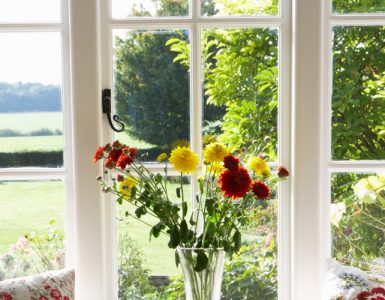Double glazing is the norm in most properties these days, but some homes can’t have double glazing because of local planning regulations. That’s where secondary glazing comes in.
Secondary glazing is often used for properties that are listed or in conservation areas. This is because it doesn’t have any effect on listed building regulations.
But that’s not the only reason you might consider secondary glazing. Did you know that double glazing and secondary glazing can work hand in hand?
Soundproof with secondary glazing
You may already have double glazing at your home, but if you live in a very noisy or busy area you might still notice sound coming through your windows.
This is where an adding another layer to your double glazing can be useful. Double glazing panes are usually separated by a 16mm spacer, which is below the recommended distance for an effective sound barrier.
By installing secondary glazing, you create a minimum of a 100mm air gap between your original window and the new pane. This should be good enough for effective soundproofing performance.
The science behind soundproofing
As sound waves hit your external window, they travel through the air gap and lose velocity. As they hit your second window, they are absorbed rather than travelling straight into your room.
That’s why a larger gap is more effective, as they have more distance to travel before they’re absorbed.

Increase your energy efficiency
If you live in a listed building or a conservation area, you may be restricted in what window choices you can make. In some cases, this might mean you can’t have standard double glazing and also result in you spending a lot on heating.
Tailor-made double glazing can be very expensive, so if you want to benefit from the thermal properties of double glazing you could consider secondary glazing instead. It costs three times less than double glazing, but you’ll still have a warmer home.
If you already have double glazing but your frames are getting old, you might find you start to feel draughts.
If your windows are out of guarantee and you don’t want to replace your windows just yet, you could consider secondary glazing to help with the draughts as well as providing you with better acoustic performance.
Overall, double glazing and secondary glazing both have their places in people’s homes today. Double glazing is great for preventing draughts in most homes, but can be improved with secondary glazing.
Adding a second pane of glass is a fantastic option for homes restricted by listed building or conservation area regulations but still want to benefit from warmer living conditions.









